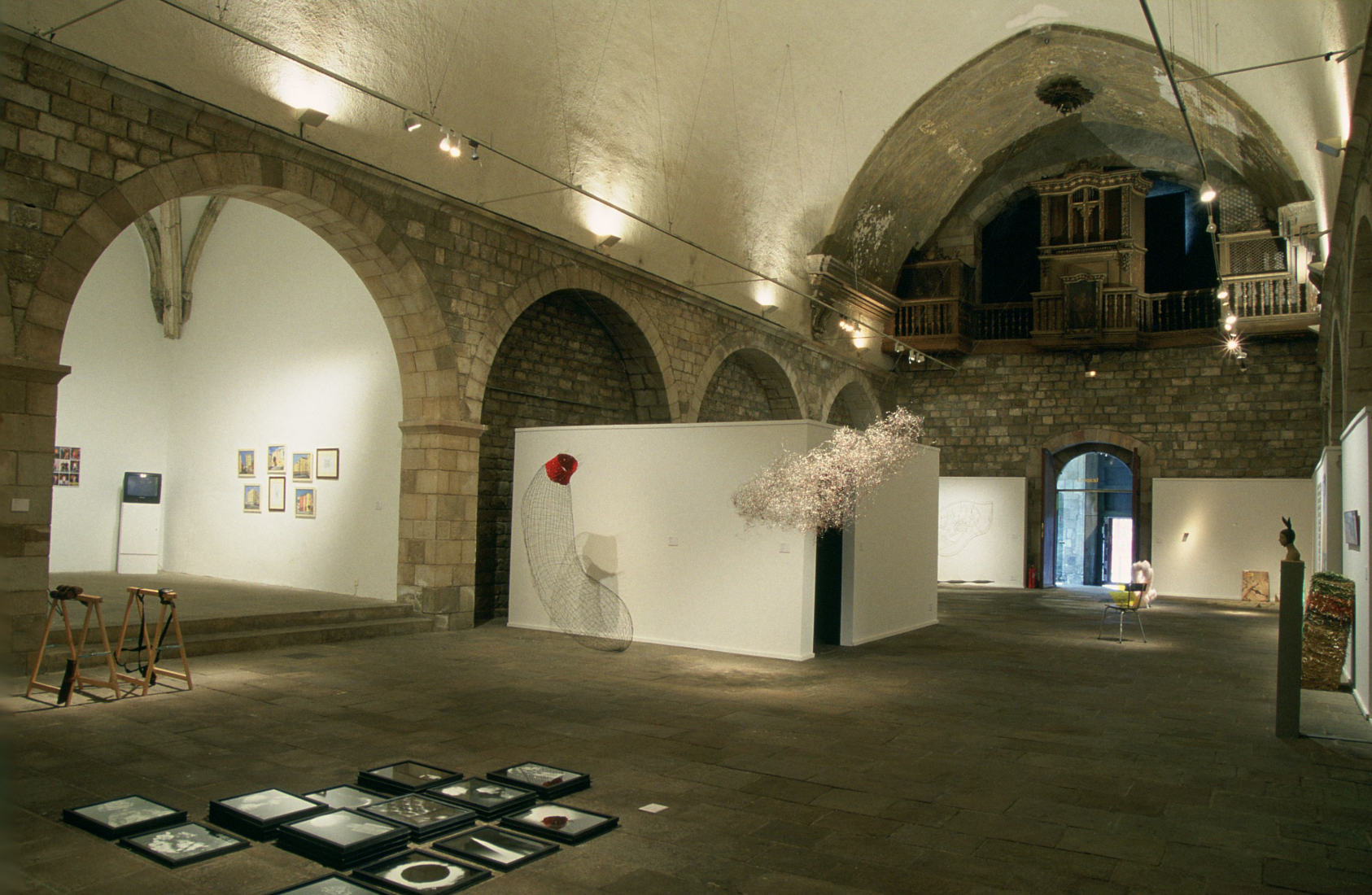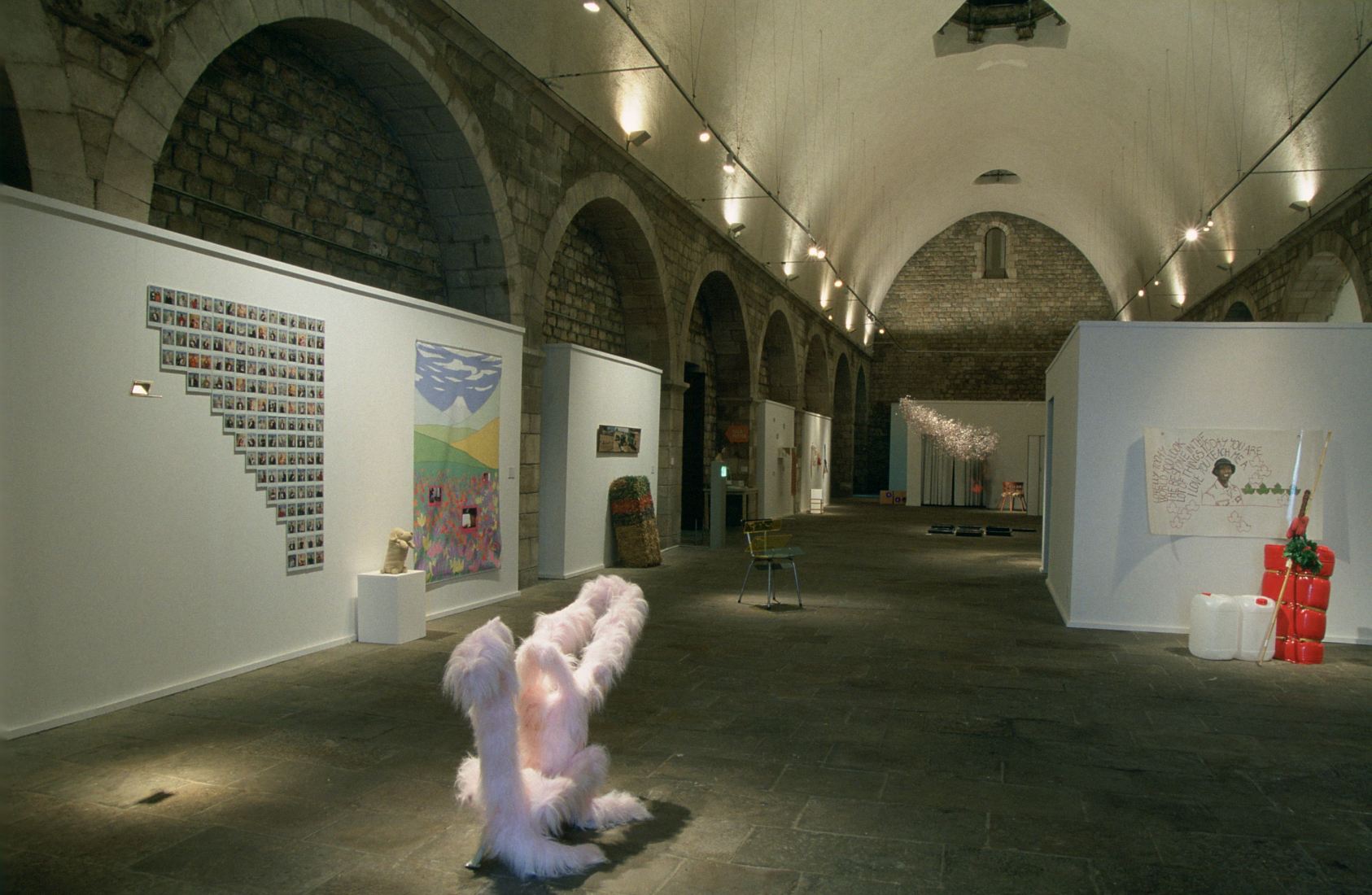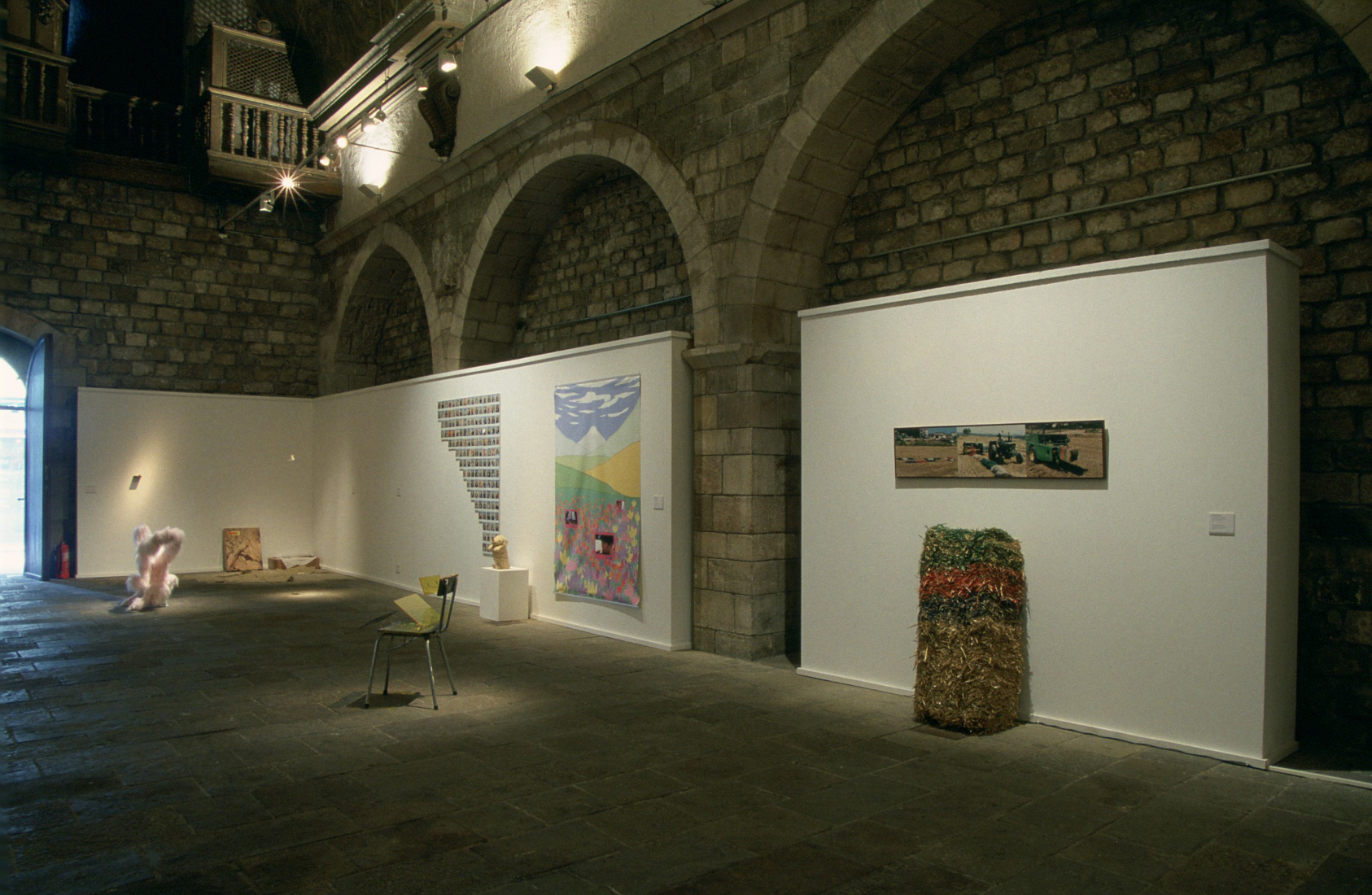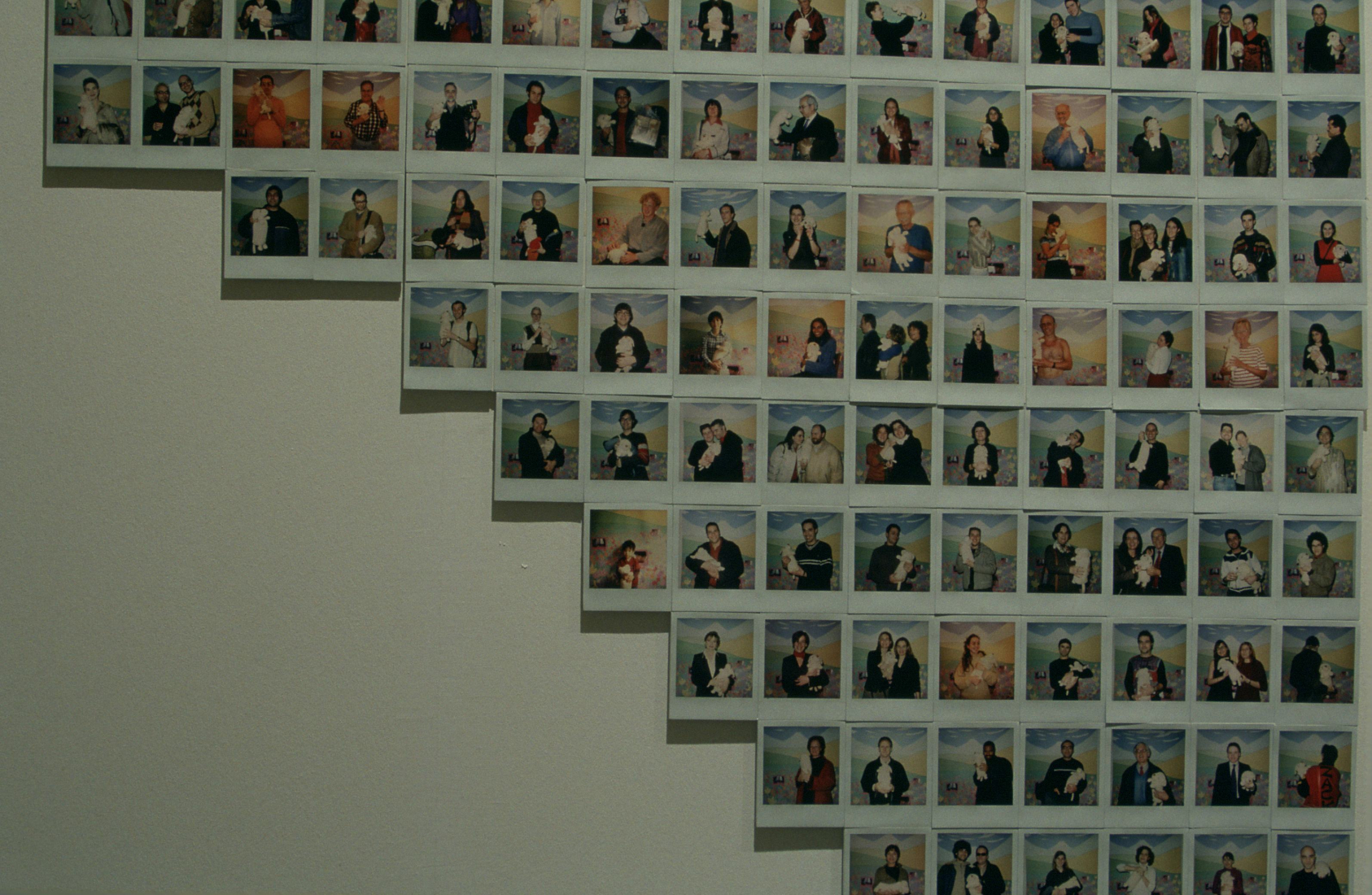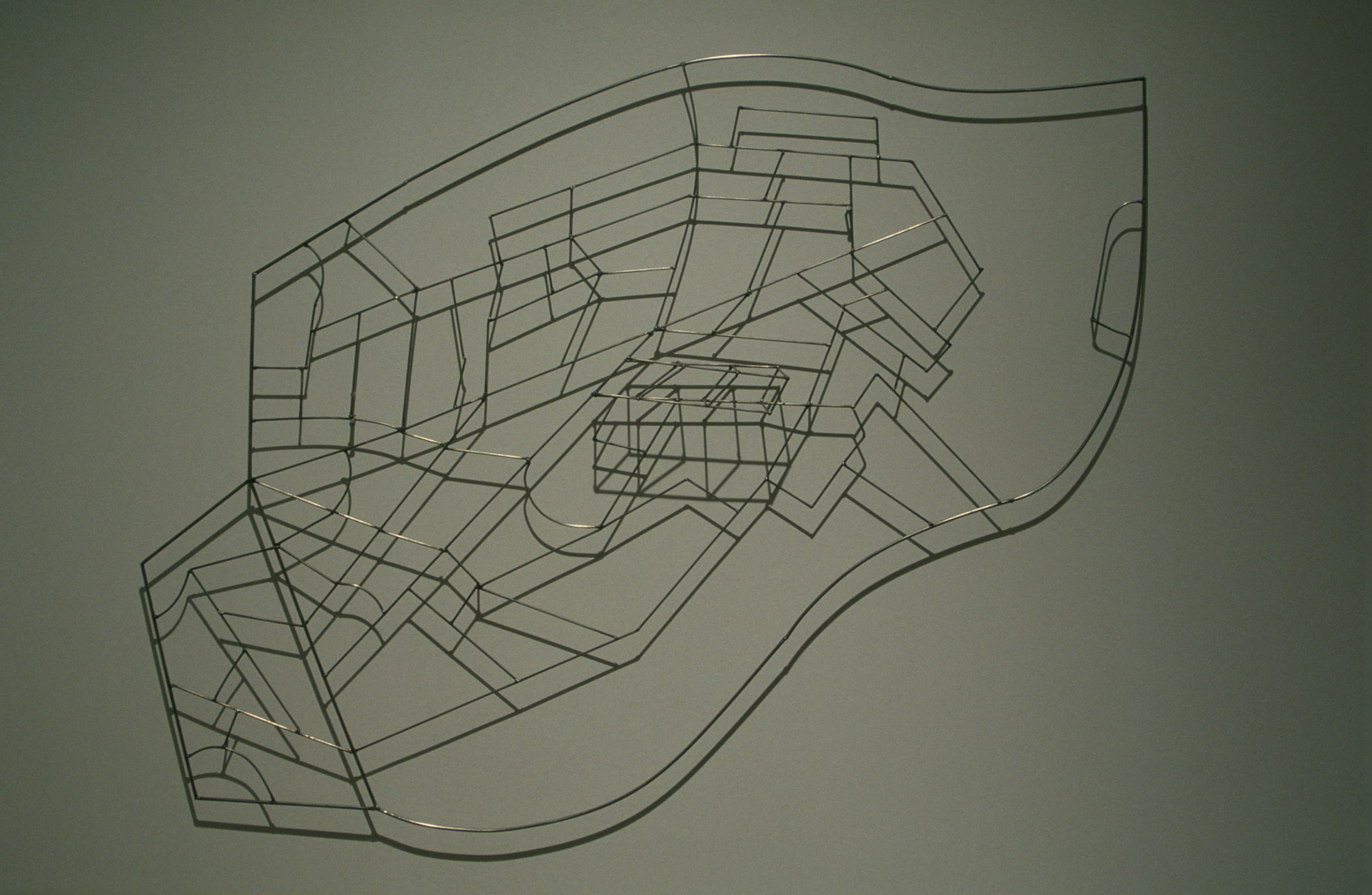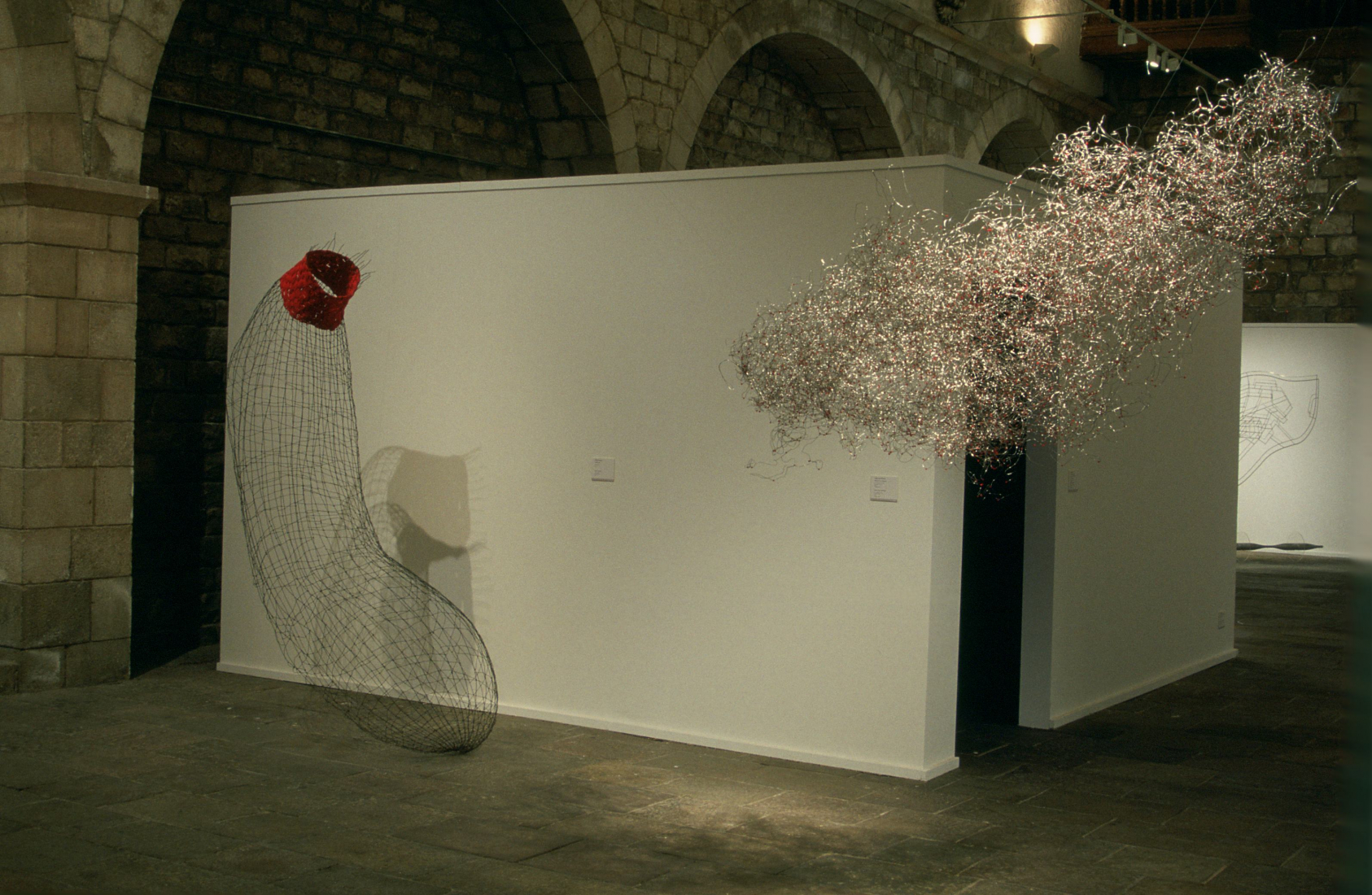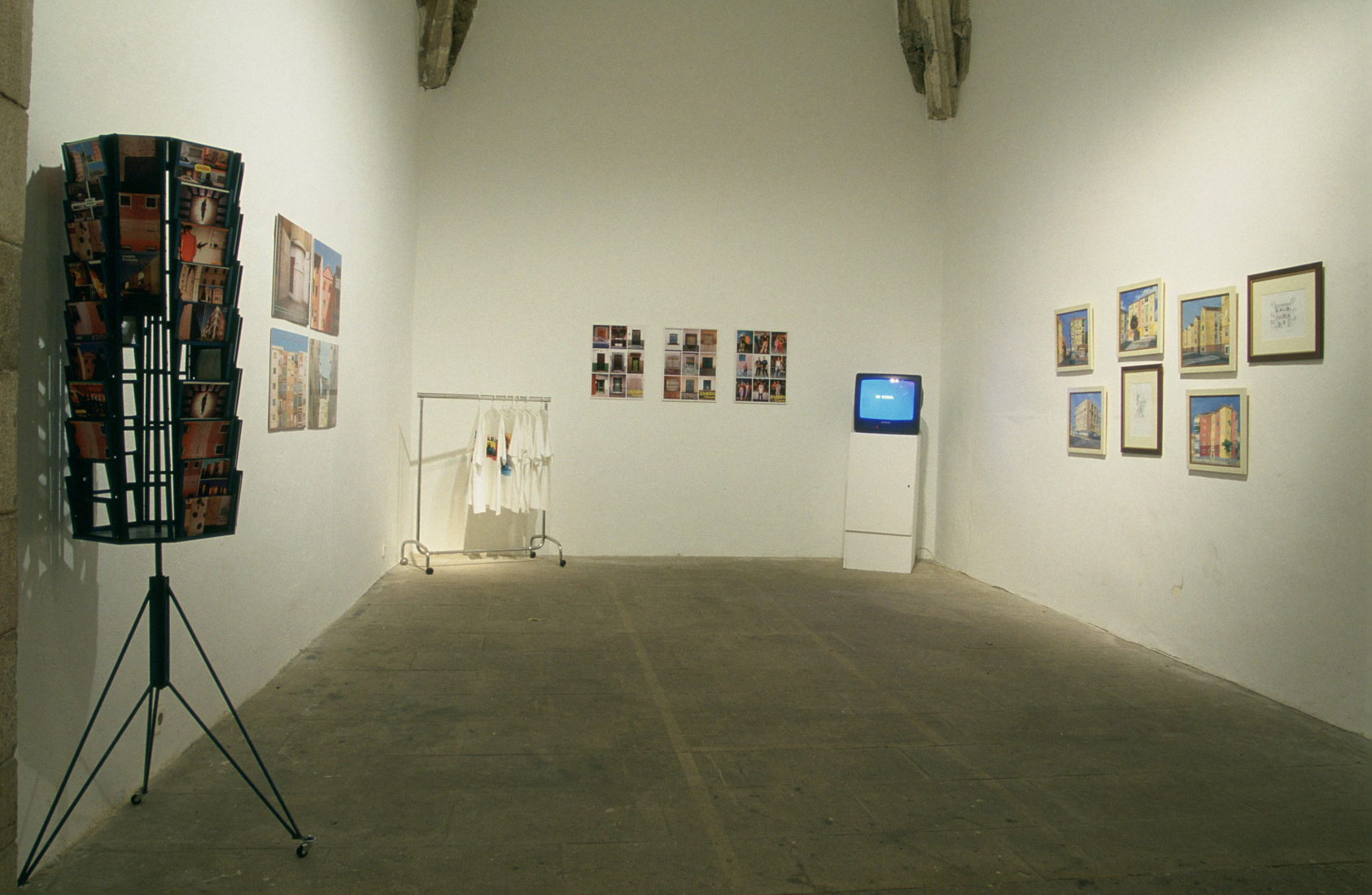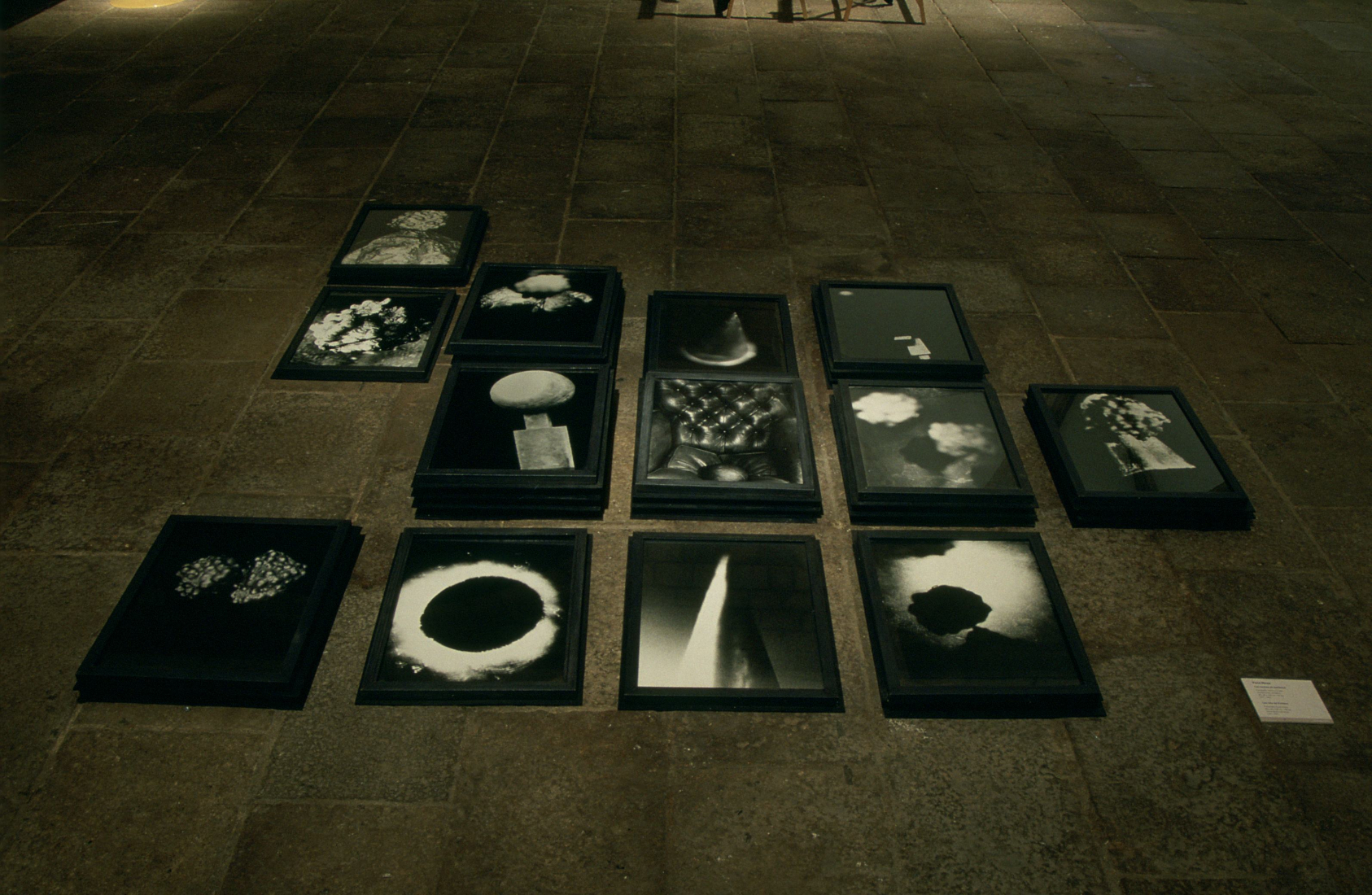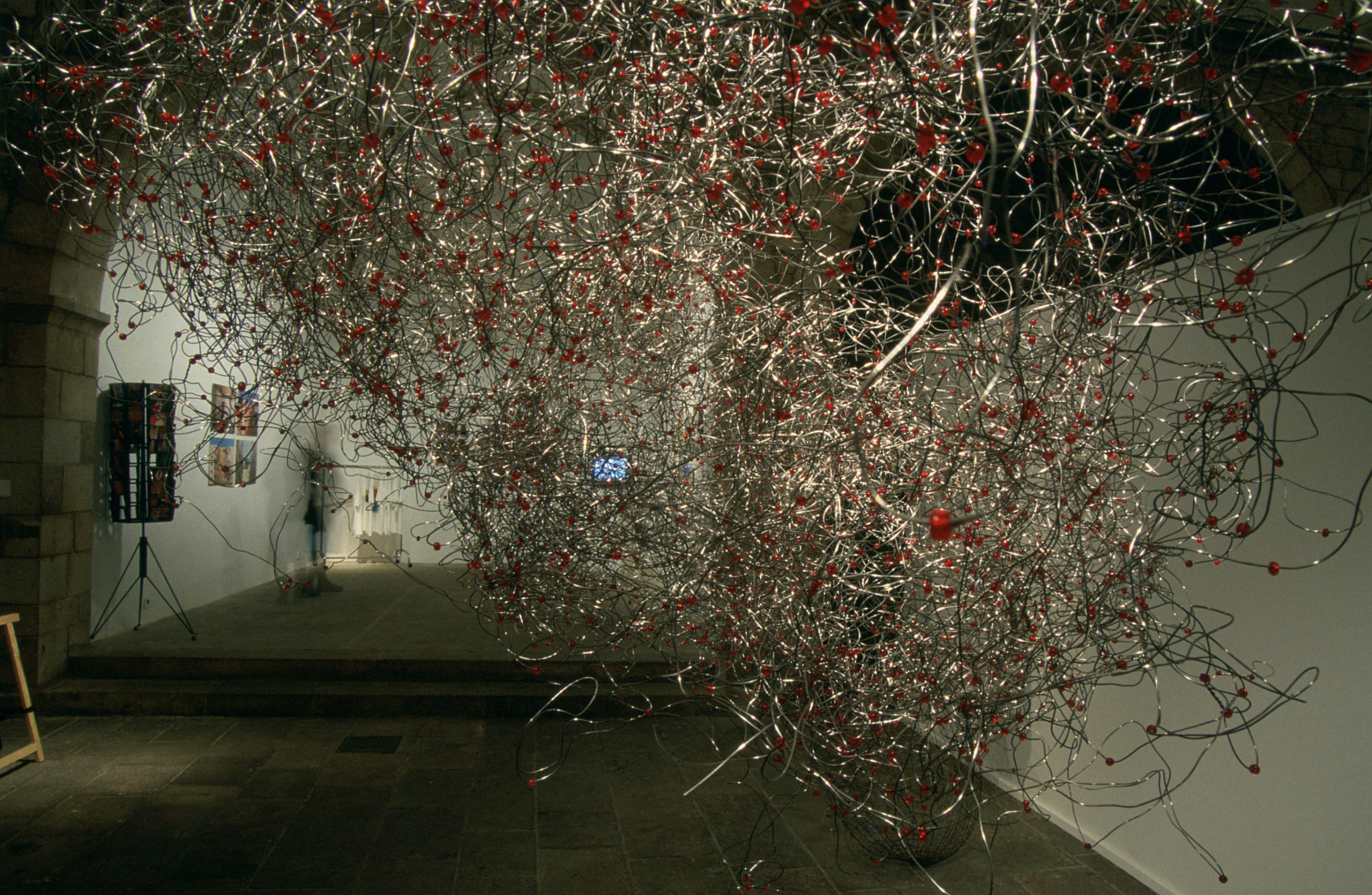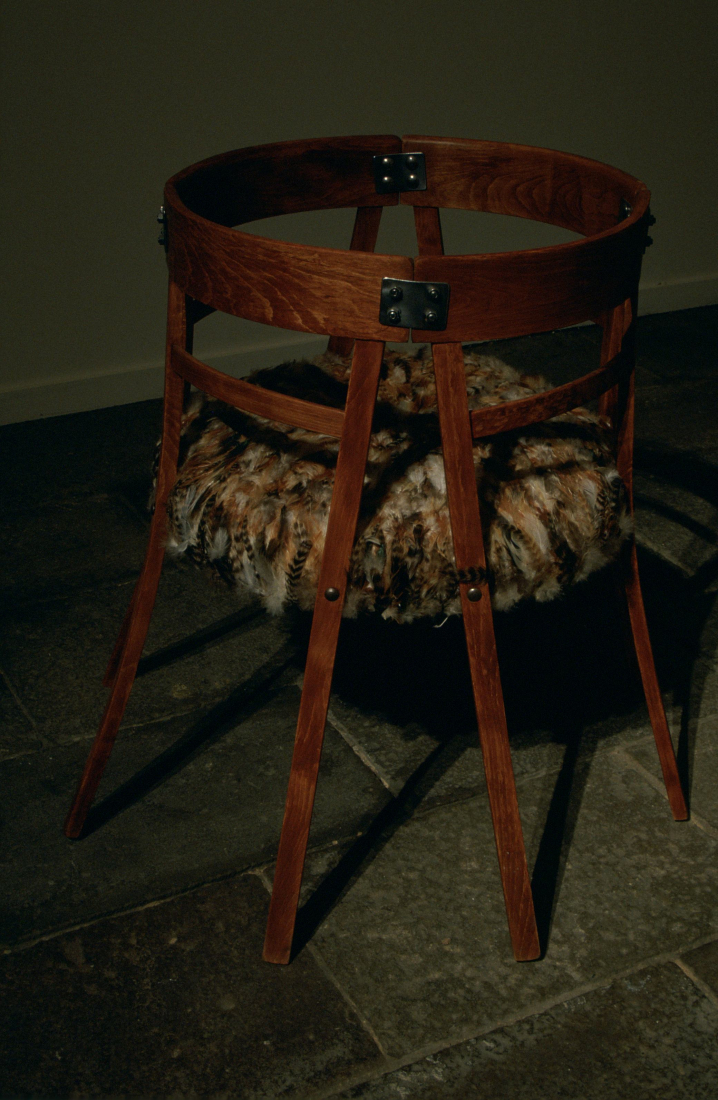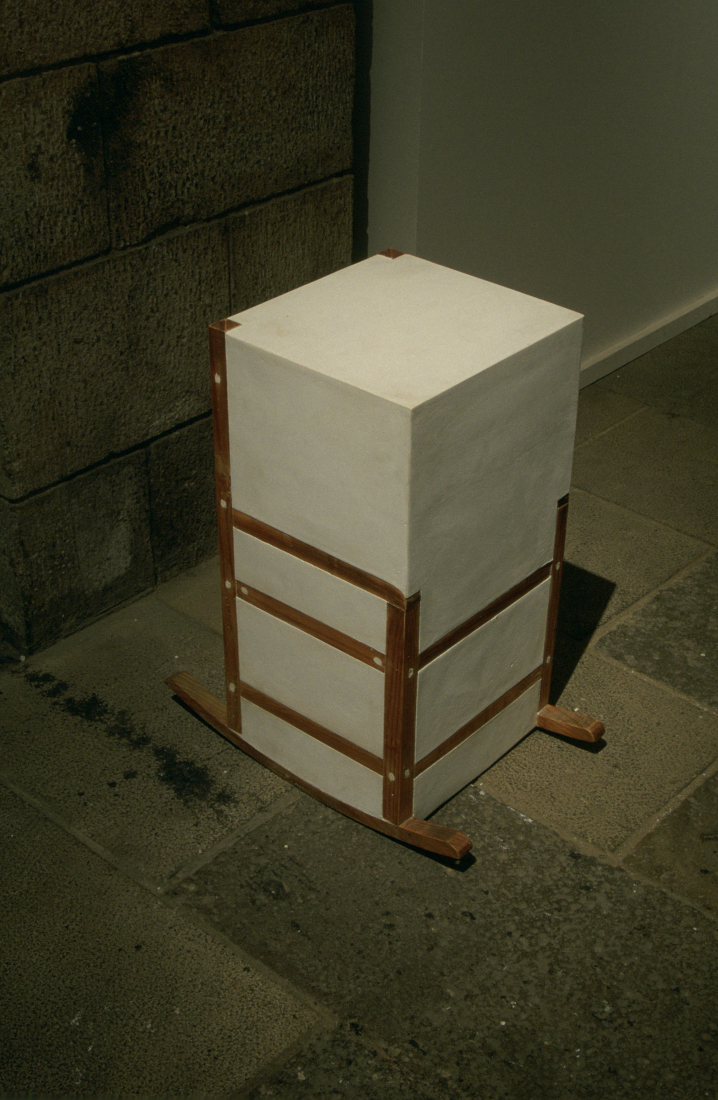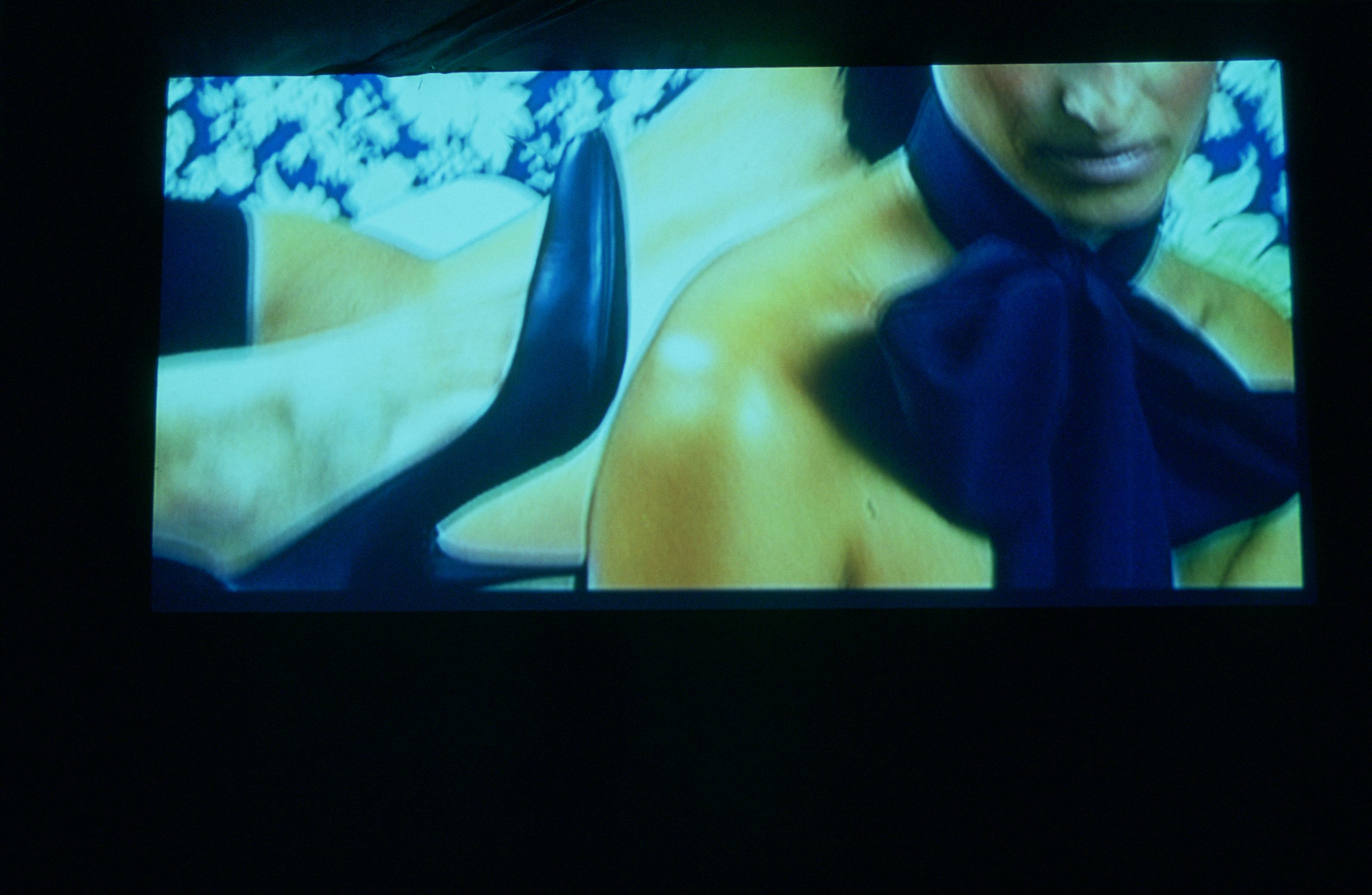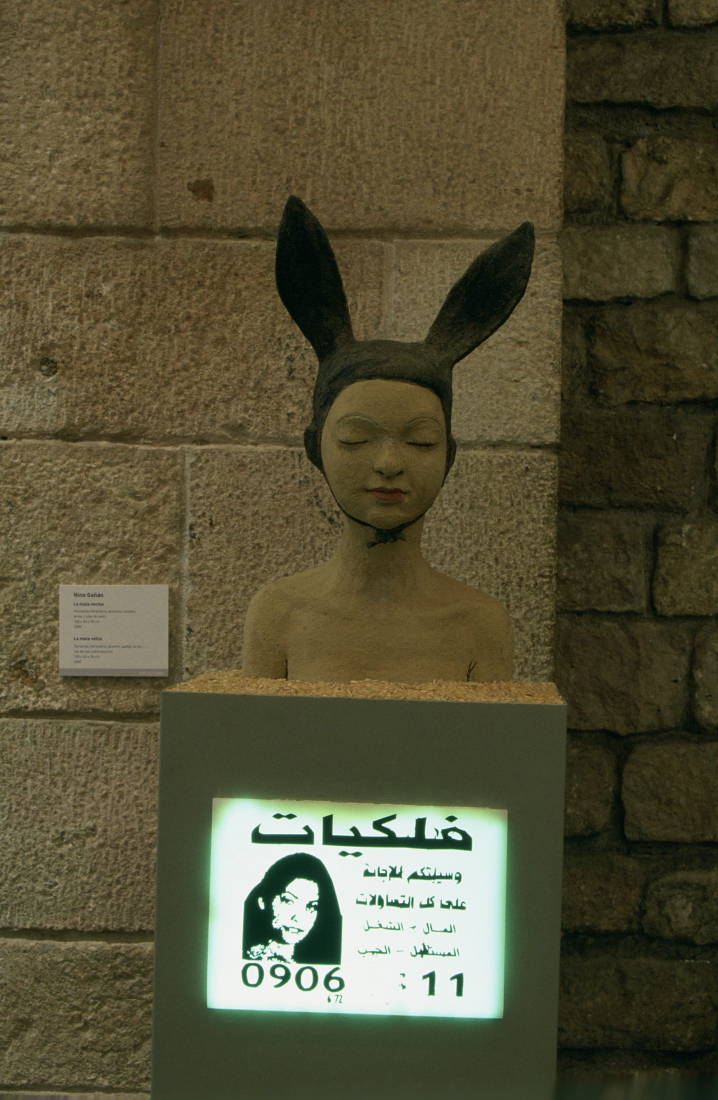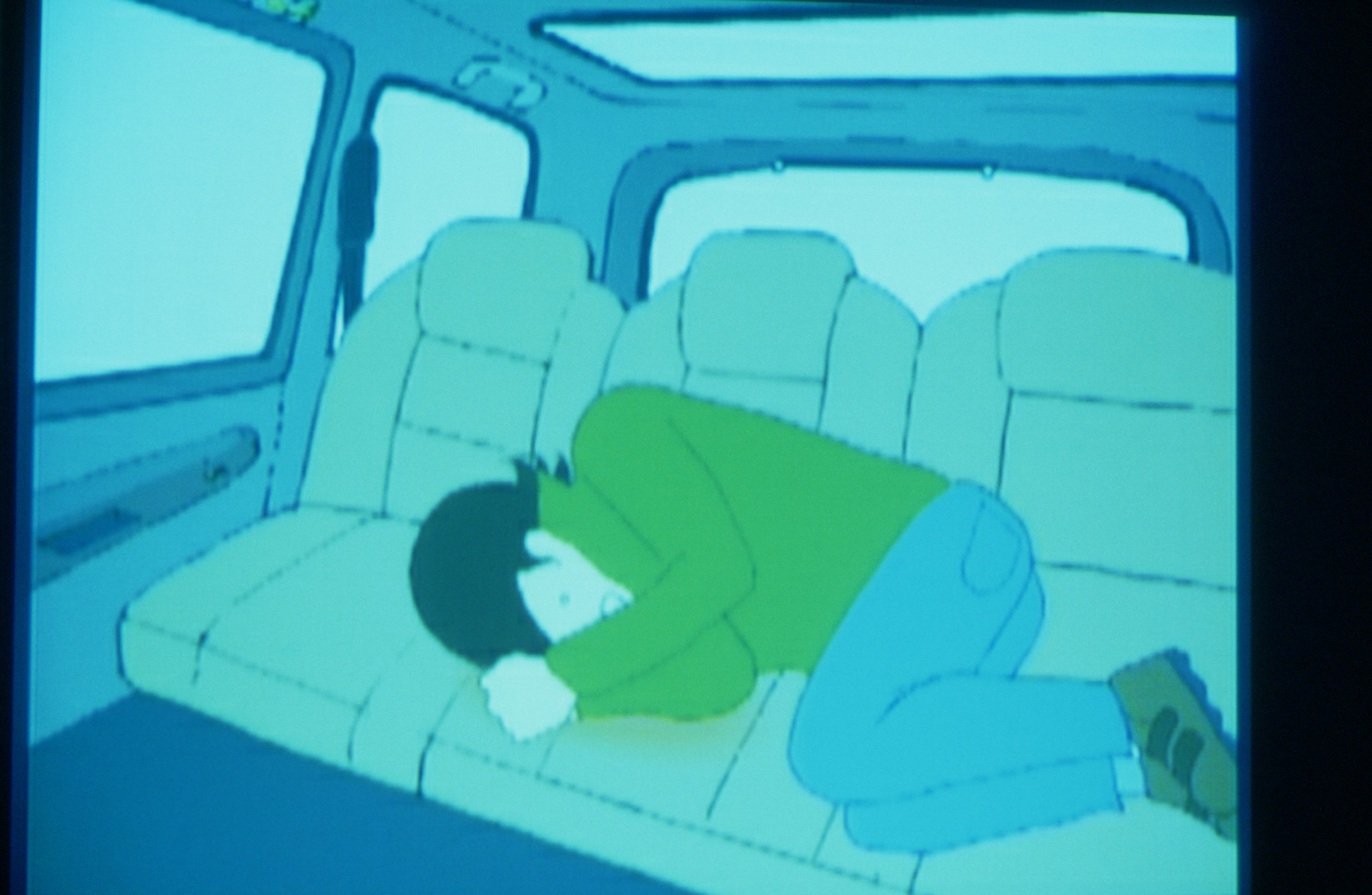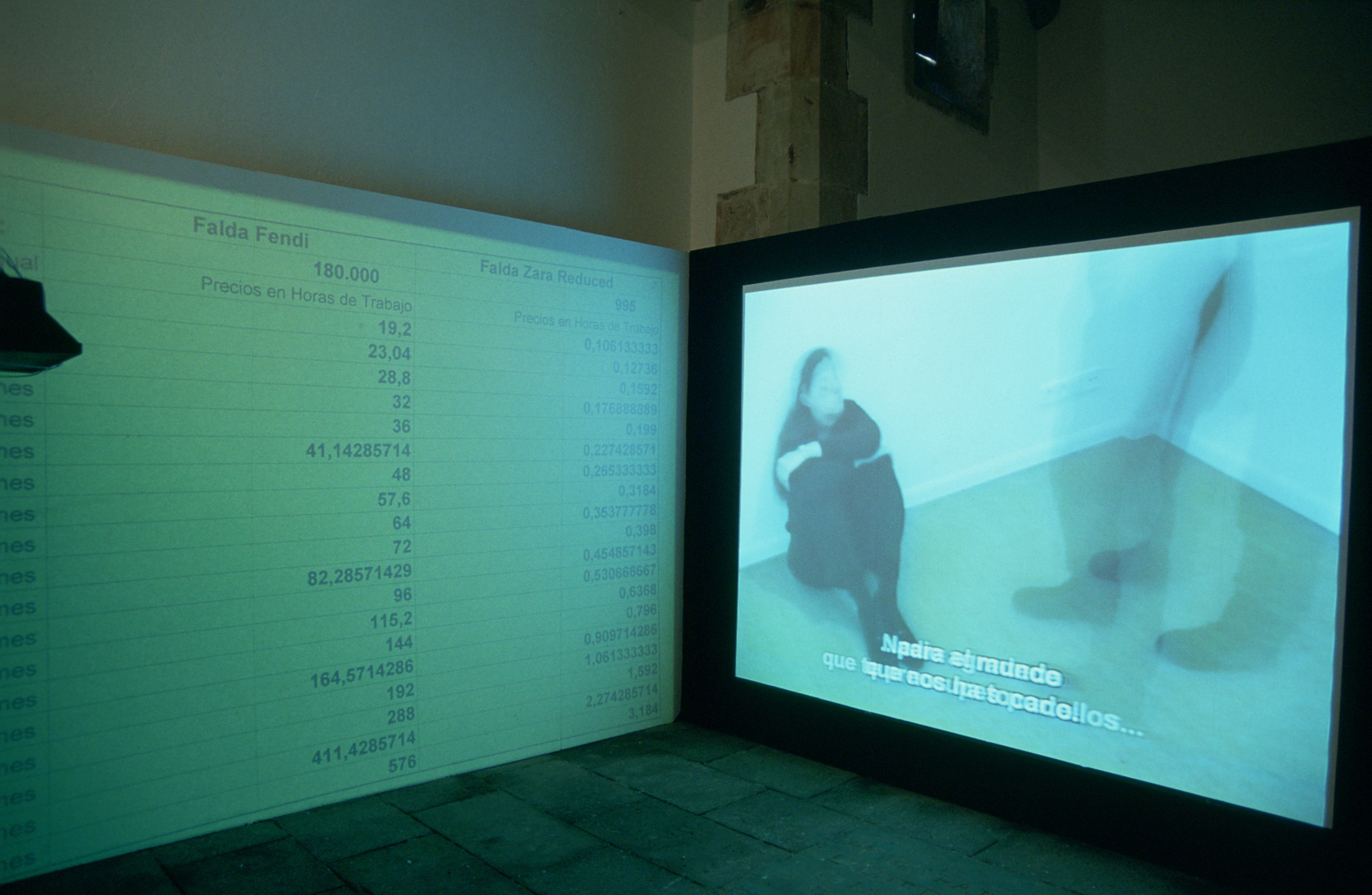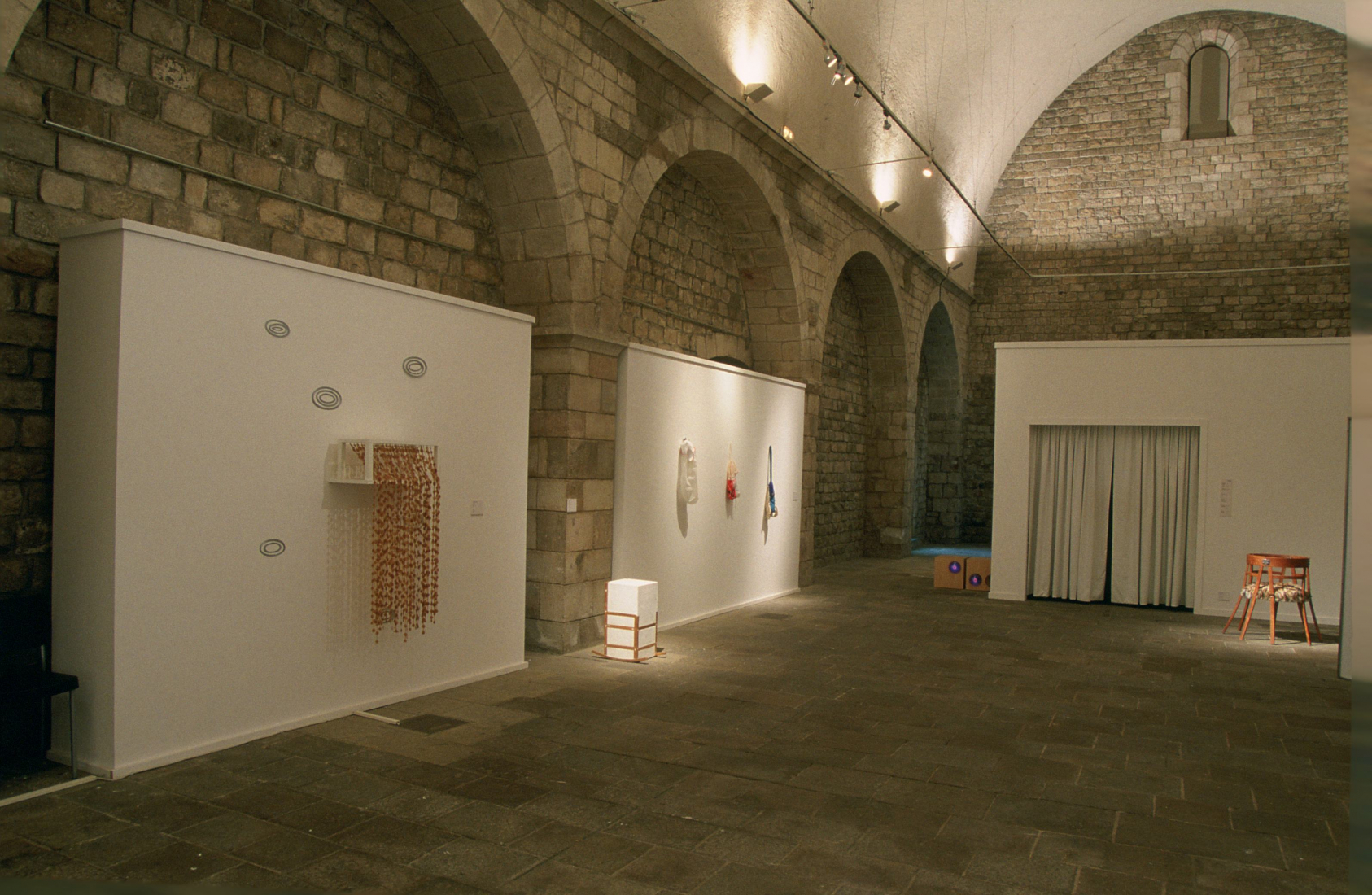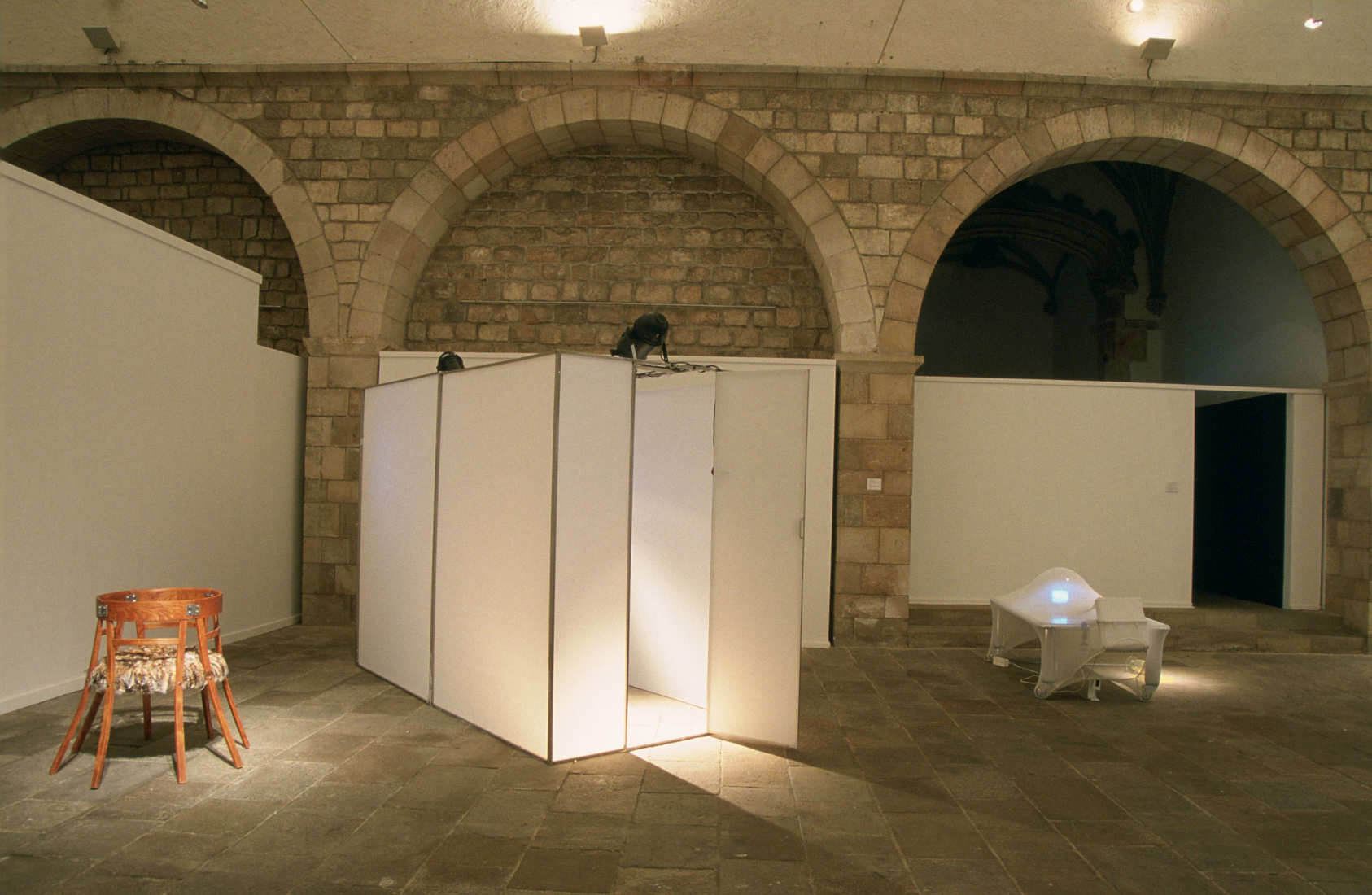Generación 2002. Caja Madrid, Art Awards and Grants
This is a survey of the results of the third Caja Madrid Benevolent Work 'Generaciones' project. 'Generación 2002', Caja Madrid Art Awards and Grants, confirms the tendency towards the mixing of media and therefore the difficulty of keeping up the traditional division into disciplines. Likewise, it is a sign of the expansion and contemporary relevance of media such as video, performance, photography and installation, which are used to express the most complex and interesting discourses, and the stagnation of disciplines such as sculpture and even painting which, with a few exceptions, do not seem to be enjoying their best moment. Engraving, however, is also tending towards a mixture of media and therefore broadening and even erasing its boundaries.
In the discipline of painting we find its characteristic diversity of styles -expressionist, geometrical, figurative, abstract, etc.-, which were repeated throughout the 20th century, as well as a tendency to look outside and draw on external referents such as video, advertising, comics, computers, photography or digitalised fragments. To the classic concerns, such as the depiction of light, beauty or silence, or painting as a way of knowledge and an instrument of thought, painters have added ideas about the penetration of advertising language into all spheres of public and private life; the search for an anthropology of feeling reflected in the expressionist, almost photographic, faces of the first prize winner, Santiago Ydáñez; the questioning of established codes in an attempt to create confusion as a way towards analysis; the therapeutic character of artistic activity or painting as a physiological need; and the nature of the work of art as merchandise.
Many of those ideas are also posed in sculpture, along with others about the manipulable or changeable character of the work, in whose final configuration not only the artist takes part, but also the curator, the assembler and the observer. And so the winner of the first prize in that discipline, José Luis Vicario, placed the emphasis on the collective character and open nature of his piece, designed to be handled and to take different shapes. Along that line of making spectators creators, not only of forms, but also of meaning, we find the works which question the function of art, the art that refers to the art world in an ongoing discussion about its purpose and definition. In other pieces, the important thing is to forget enforced values about what is useful, useless, real or imaginary about the objects and open up from there to a whole world of possibilities; or to include the sense of touch by inviting spectators to touch, grasp, embrace or feel them, or to arouse a desire to do so. Other works comment on the danger of the homogenisation of cultures and societies, which may bring about a decline in multiculturality, while others make an attempt at representation of figures through pieces which are fragmented or sewn together, generating forms which could perfectly well belong to the sphere of the undefined.
The wealth of the discourses which have been observed for some time in the field of photography, since the art became something more than a document, is to be found in the works of the artists selected in this discipline. Photography is seen as a medium for exploring the rules of behaviour of human beings, their conflicts and the way they relate to themselves and others; as a sphere for thinking about the city and its surroundings, the environment, the transformations and manipulations of the landscape by human factors; and as a place where concepts such as reality and fiction can be rethought.
Moreover, photography is conceived as a mirror in which we see our reflections, as an investigation into or a search for personal identity or a particular place. Like the mirror, photography shows us the traces left on the face by the passage of time, the changes undergone by the body because of certain aggressions, which show how fragile and vulnerable it is. As shown by the work that won first prize in the discipline, El final del segle xx, by Patric Tato Wittig, photography is also a metaphor for and witness to the changes that took place in the history of the 20th century: the decadence of the finest photographic studio of its day in Kaliningrad and the fact that it has been replaced by a digital instant photo shop run parallel to the decadence of the city when it passed from the communist system to the market economy and, by extension, to another way of thinking.
In the discipline of the engraving we have works which are half way between installation and object, since the integration of different artistic expressions and the mixture of media -silk screen, lithograph, silicone moulds, photography, etc.- give rise to a texture and an appearance far removed from the original elements, heightened thanks to printing techniques, computers or plastic paint. Engraving is also used by artists to think and talk about gender and the plurality of identities of the ego; or the need to go to unknown places, to try to forget the reference elements and discover new worlds, new possibilities; or the need to construct our idea of nature and the world in a time of technical manipulation and reproduction.
The variety of media used in the discipline of the new tendencies may be the reason for the wealth and complexity of the discourses and ideas generated. The aspects most directly related to the problems of contemporaneity and the originality of ideas find an open space in this discipline. The video projection by the winner of the first prize for new tendencies, Joan Morey, entitled >bd< bipolar disorder, is far from the linearity of the classic video support and links video and motion photography sequences and, as in earlier works, represents characters who symbolise the void, the overdose, sunk in an apparent existential tedium. Along the same line, and in an attempt to pervert the original narrative of cinematic structure, Vicente Blanco places special emphasis on details and tries to construct a narrative from them.
An interest in going deeper into and marking out the boundaries of the concepts of fiction and document; the dividing line between the real and the virtual worlds; the invasion of privacy or the absolute lack of it in the contemporary world; looking at the border zones between different disciplinary areas and the demand for a conceptual and economic space enabling another type of relation between the artist, the institution, the public and the galleries; and the division of life between work and leisure are aspects explored in the projects selected.
Within the most up to date international currents, the work of Santiago Cirugeda and his concern with the ordering of cities are outstanding. In his projects he defends the capacity of individuals and groups to act and decide on the use of and intervention on the city, and invites us to plan actions and strategies of resistance in the face of town planning policy. Javier Viver's project EspHeM, a service company which aims to provide the user with a new concept of housing, and Schema, a group of artists and theoreticians who are interested in problems of identity and the use of the signs that define us as public referents, are connected with that current.
The set of works in the different disciplines -painting, sculpture, photography, engraving and new tendencies- selected for this competition delve deeper into the idea of the atomisation and the expansive character of contemporary art.
Oliva María Rubio
Sponsors:
Caja Madrid Obra Social, El País, Rne4 Col·labora: FujiFilm
Primavera Fotogràfica program 2002



